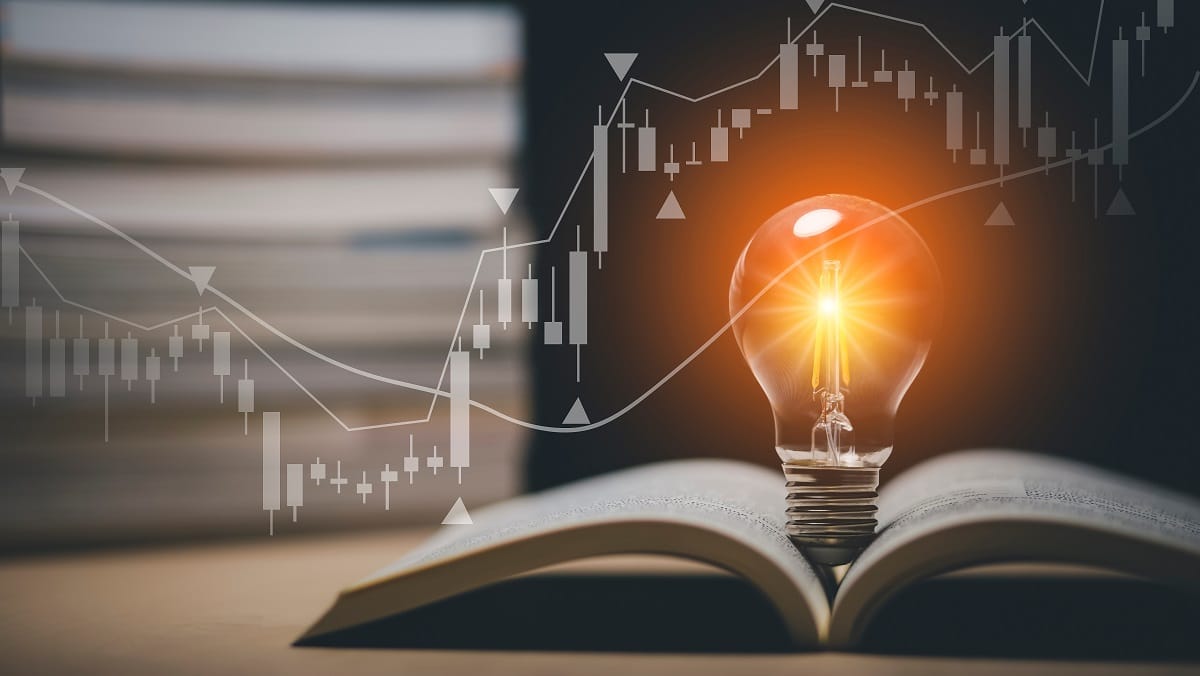For beginners and more advanced traders alike, there are a lot of areas to learn which include technical analysis, fundamental analysis, price action, economic indicators, algorithmic trading, risk management, trading psychology, and more.
If you go through Amazon, for instance, and search for the best forex books or the best books on trading the currency markets, you’ll notice hundreds if not thousands of titles available.
So which ones will give you the most useful information for you to take action?
Fortunately, I’ve sourced through almost every book you can get. With it, I’ve narrowed down the best book for each major topic you need to trade forex profitably.
Let’s go through each title below.
The Best Forex Books…
For Beginners:
Currency Trading for Dummies, 3rd Edition
Authors: Kathleen Brooks, Brian Dolan
Publication Date: January 2015
In Currency Trading For Dummies (3rd Edition), you’ll find an introduction to the forex markets, as well as ts major economic drivers.
It also covers an overview of technical analysis, fundamental analysis, creation of trading strategies, and management of trades.
The book ends with the habits of successful traders, rules for risk management, and additional resources.
What I Like About It:
This book is an excellent choice for beginners as it covers almost all the basics you need to get started.
Key concepts are provided in a clear, concise manner, and it explains technical jargon in an easy-to-understand format.
For Technical Analysis:
Technical Analysis of the Financial Markets: A Comprehensive Guide to Trading Methods and Applications
Author: John J. Murphy
Publication Date: January 1999
With over 600 pages, Murphy’s book is regarded as the foremost authority on technical analysis and an obvious choice for inclusion on any list of best forex books.
The book offers a detailed explanation of trend, reversal and continuation patterns, moving averages, oscillators, Elliott Wave theory, Dow Theory, and financial time cycles.
The writer gives a rundown of Japanese candlestick patterns, stock market indicators, money management tactics. Also, the writer covers advanced technical indicators in the latter part of the book.
What I Like About It:
Learning the most common technical indicators can be achieved by reading this book alone.
Although it has a section on futures and stock markets, the techniques can be applied to forex as well. In addition, a guide on advanced indicators such as Starc Bands and Keltner Channels provides you with the information you need to use technical analysis as a tool for trading.
By far, this is the most advanced and in-depth guide you can get making it one of the best forex books on technicals.
For Economic Indicators:
The Economic Indicator Handbook: How to Evaluate Economic Trends to Maximize Profits and Minimize Losses
Author: Richard Yamarone
Publication Date: December 2016
The Economic Indicator Handbook provides a detailed explanation of different economic indicators in various sectors such as Manufacturing, Retail Sales, Labor Market and Employment as well as Housing and Construction, among others.
Formulas and compositions of different economic indicators are clearly explained for ease of comprehension. It ends with information disseminated by the Federal Reserve System — this is a great conclusion to achieve the book’s goal of helping you learn economic factors that affect the forex market.
What I Like About It:
This book gives you the information you need to understand the different economic indicators and how they affect financial markets.
Once you finish reading The Economic Indicator Handbook, the numbers (e.g., Actual, Previous, Forecast) you see for a particular indicator will make sense. This allows you to analyze statistics more effectively to then possibly integrate them into your trading strategy.
For Mechanical Traders:
The Complete TurtleTrader: How 23 Novice Investors Became Overnight Millionaires
Author: Michael W. Covel
Publication Date: February 2009
The Complete TurtleTrader touches on the classic nature vs. nurture debate on whether profitable traders are born or made.
The first few chapters discuss the origin of the Turtles and the philosophy and rules of the trading system employed by them.
It further narrates the progress of the traders and their trading environment. The book concludes with the shutdown of the Turtle Trading Program and the forthcoming second-generation Turtles.
What I Like About It:
This book is best for mechanical or systematic traders who follow rule-based strategies which aim to eliminate discretionary-based trading decisions.
It highlights how training, application, consistency, and a focus on the big picture can help to achieve profitable trading results.
In addition, it emphasizes that great traders are made, not born.
This gives us the conclusion that every endeavor, including trading, can be learned and applied (i.e., nurture) and sometimes can lead to significant profits.
For Trading Psychology:
Trading in the Zone: Master the Market with Confidence, Discipline and a Winning Attitude
Author: Mark Douglas
Publication Date: April 2000
Trading In The Zone begins with an emphasis on mental analysis and resilience. It goes on by elaborating on our state of mind.
A lot of chapters are focused on your own beliefs which will have the biggest impact on trading success. Finally, Mark Douglas concludes by thinking like a profitable trader which involves edge, consistency, and self-discipline.
What I Like About It:
Trading In The Zone is a good read, especially if you are new to trading and you find yourself repeating the same mistakes.
The book identifies the importance of developing consistency and persistence. Additionally, the book can help the trader change his beliefs and his psychological make-up. Both are significant factors in controlling emotions.
For Price Action Trading:
Reading Price Charts Bar By Bar: The Technical Analysis Of Price Action For The Serious Trader
Author: Al Brooks
Publication Date: March 2009
One of the best forex books for learning how to trade with price action is Al Brooks’ Reading Price Charts Bar By Bar.
It introduces the basics of price action such as signal, entry, and reversal bars. This is followed by an understanding of patterns of trends, pullbacks, ranges, breakouts, and reversals.
The concluding parts of the book show examples where you can see how to trade using his teachings. Finally, the writer gives 39 numbered guidelines to follow to improve your performance.
What I Like About It:
All chart technical indicators are lagging. This means they use price itself as the basis forf their calculation so indicators will always follow price.
This book offers traders a detailed explanation of how to use price action as a leading indicator. Analysis using price action can be a more effective way of identifying favorable entry points for higher-probability trades.
For Risk Management:
A Trader’s Money Management System: How to Ensure Profit and Avoid the Risk of Ruin
Author: Bennett A. McDowell
Publication Date: July 2008
One of the most important factors in trading is money management. There are many ‘ratios’ – mathematical formulas available to the trader which can show how well he is managing risk (which will increase the odds of winning over the long run), such as the Kelly Criterion.
In this book, McDowell explains how to fine-tune stop-loss exits, how to properly create and keep records, and how to manage trade size.
Various formulas for creating a winning risk management system are elaborated with examples. These include payoff ratio, win ratio, position-sizing, drawdown, risk of ruin, and more.
What I Like About It:
Unlike books that showcase complex mathematical theories, the risk management formulas presented in this title are straightforward and easy-to-understand.
You can easily use the concepts and benefit from them immediately to manage money. The principles presented in this book will help losing traders become profitable while winning traders will be taken to a whole new level.
This is done through the use of simple mathematical calculations to analyze your trades and help maximize your return and minimize your losses.
For Algorithmic Trading: Building Winning Algorithmic Trading Systems: A Trader’s Journey From Data Mining to Monte Carlo Simulation to Live Trading
For Algorithmic Trading:
Building Winning Algorithmic Trading Systems: A Trader’s Journey From Data Mining to Monte Carlo Simulation to Live Trading
Author: Kevin J. Davey
Publication Date: June 2014
The majority of daily trading volume on the NYSE is carried out by algorithms and the move toward computer-generated trading decision will only grow.
Algorithms have the advantage of reducing emotions from trading and increasing consistency in the process (there’s still a human overseeing the computer so emotions will always be present).
Jim Simons, the legendary hedge fund manager of Renaissance Technologies has used algorithms to great effect.
In the first four months of a tumultuous 2020, the Medallion Fund of Renaissance Technologies has risen to 24% with its 9.9% bulk coming from March 2020, a brutal period in the stock markets.
The use of mathematical algorithms is proven and will only increase over the coming months and years. Even for us smaller guys, even though we’re not hedge funds, It makes sense to include Building Winning Algorithmic Trading Systems in our reading list of the best forex books.
The book gives you the entire step-by-step process of formulating profitable algorithmic trading systems.
It starts with creating and validating ideas, formulating entry and exit points, testing trading systems, and implementing these on live markets.
The book will also delineate rules to assess whether a system is worth pursuing or not. It concludes by teaching traders how to monitor their live strategy with appendices on examples of specific strategies that utilize the TradeStation Easylanguage.
What I Like About It:
This book emphasizes on the importance of algorithmic trading to employ objective methods of trading the market.
Since the financial markets, including forex, are inherently random, learning how to develop your own algorithmic trading systems can give you an edge over a purely manual approach.
Building Winning Algorithmic Trading Systems is a great book for this specific topic because it outlines the steps clearly giving you the structure you need to develop your own quantitative systems. Thus, it removes the guesswork and research necessary to progress from one stage (of developing algorithms) to another.
More Articles From Wealthy Living
- Best High Dividend Stocks: The Ultimate Millenials Investment Guide
- Dividend Kings Stocks That You Should Add to Your Watchlist Right Now
- Everything You Should Know About Rick Ross’ Net Worth and Other Facts
- Discover Blippi’s Net Worth and Other Fun Facts
Disclosure: The author is not a licensed or registered investment adviser or broker/dealer. They are not providing you with individual investment advice. Please consult with a licensed investment professional before you invest your money.
Neither Tim Thomas nor Timothy Thomas Limited hold positions in the stocks, ETFs, mutual funds, forex, or commodities mentioned.
This article was produced and syndicated by Wealthy Living.
Featured Image Credit: Shutterstock





